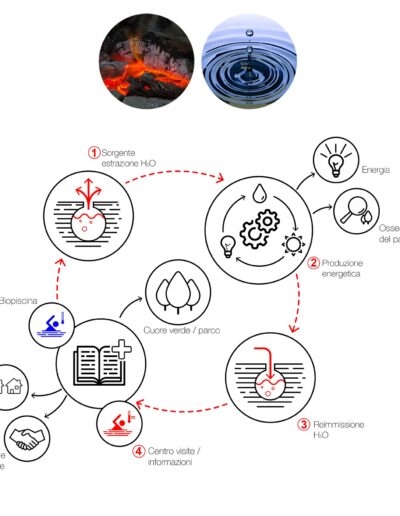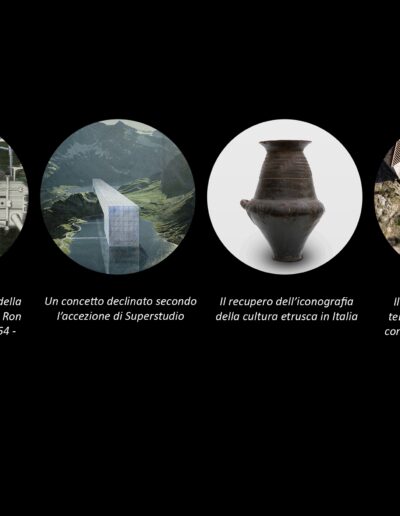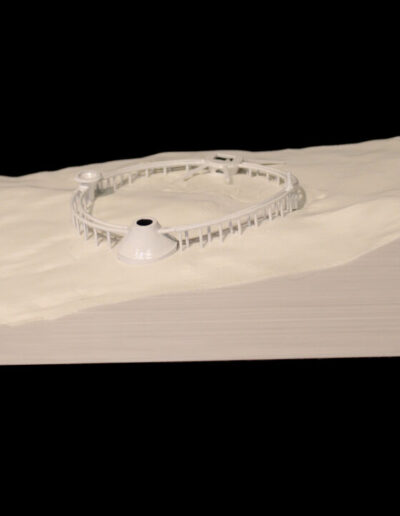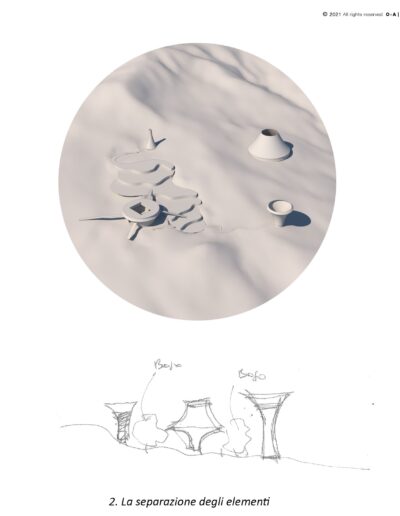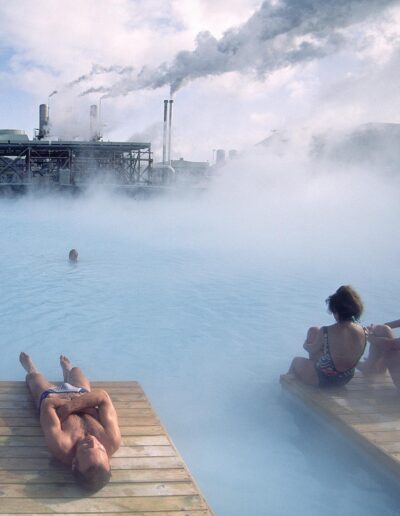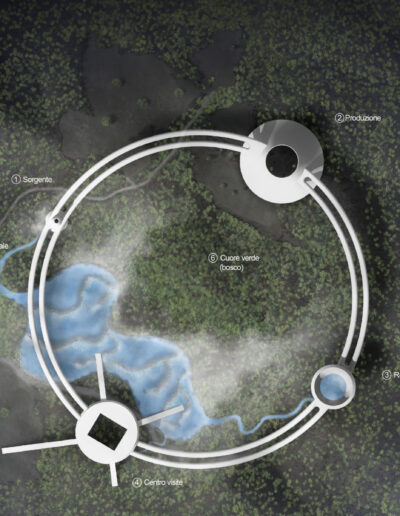
An energy and production system – the water cycle for a new geothermal park
“…quod si quis diligentius aestumaverit abundantiam aquarum in publico, balineis, piscinis, euripis, domibus, hortis, suburbanis villis, spatia aquae venientis, exstructos arcus, montes perfossos, convalles aequatas, fatebitur nil magis mirandum fuisse in toto orbe terrarum”¹ [Plinio il Vecchio (23-79 d.C.), Naturalis historia]
Nothing is more astonishing than the large amount of water available for everyone, when natural barriers are all overcome.
The project presented at III edition of Pisa Biennale TEMPODACQUA wants to stimulate discussions about geothermal energy and water in high landscaping valued areas. A flying ring grazes the tree crowns and touches the soil in certain points: the conflict between infrastructure and landscape triggers a debate on the environmental fitting and architectural impact of advanced technology plants.
The assumption is a return to the cultural “memories” of ’60 (Walking City, Ron Herron – Archigram 1964-66), interpreted later by the Italian group Superstudio. Etruscan archetypal iconography becomes a formal reference and geothermal energy is represented through the wellness of thermal water.
Infrastructure stops being a place for production and turns into an easily accessible place where people can experience a collective occasion for body care, knowledge of the territory and contemporary energy production. Nature, society and infrastructure: a new balance for the future.
Water is considered a landscape and an architecture design tool for geothermal energy production.
An ancient volcano, though dormant, emanates in the darkness of the earth vital energy transmitted to water. Water becomes energy. Water is thought as a circular infrastructure that links geothermal production, reuse and social involvement: 1 – Spring / extraction as origin of circular production; 2 – water, territory and energy production; 3 – return as injection into the soil; 4 – water for the enhancement of the landscape, social use and occasion for knowledge and wellness.
Starting from geothermal energy, the vision focuses on creating new meeting and wellness points for promoting the knowledge of this natural source. The goal consists of unfolding the hidden potential of this geographic zone through future scenarios for the restoration of areas characterized by geothermal energy.
The double pipe of water and people is the symbol of the circular economy, a true effort to eliminate waste and emissions in atmosphere and soil. Nature, society and infrastructure can co-exist in balance.
An imaginary realism. The circular system – openly emphasized but also significant in terms of communication – could become a reality through the adoption of a model of innovative shaped elements. Circularity is not a design. Circularity is an approach.
¹… but if someone scrupulously calculates the abundance of water (supplied) to public (fountains), spas, cisterns, canals, houses, gardens, suburban villas, and the distance from which the water comes, built arches, pierced mountains, leveled valleys, he will confess that there has never been a more wonderful thing on the whole Earth
- Project: An energy and production system – the water cycle for a new geothermal park
- Designer: O+A|Ori Arienti Landscape and Architecture
- Location: Tuscany
- Year: 2019
